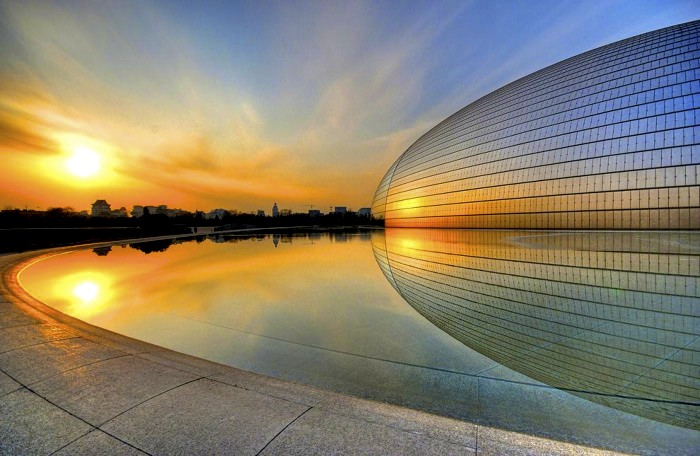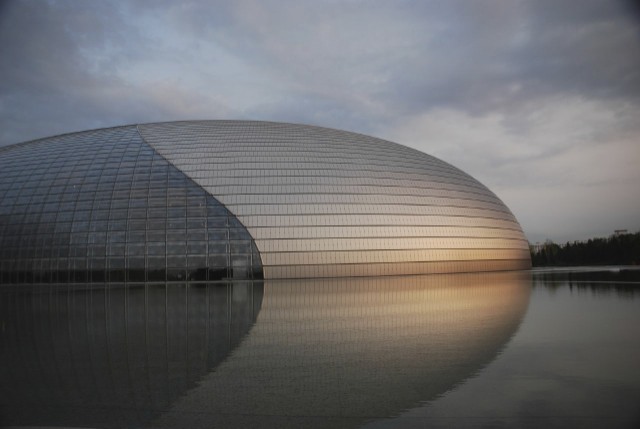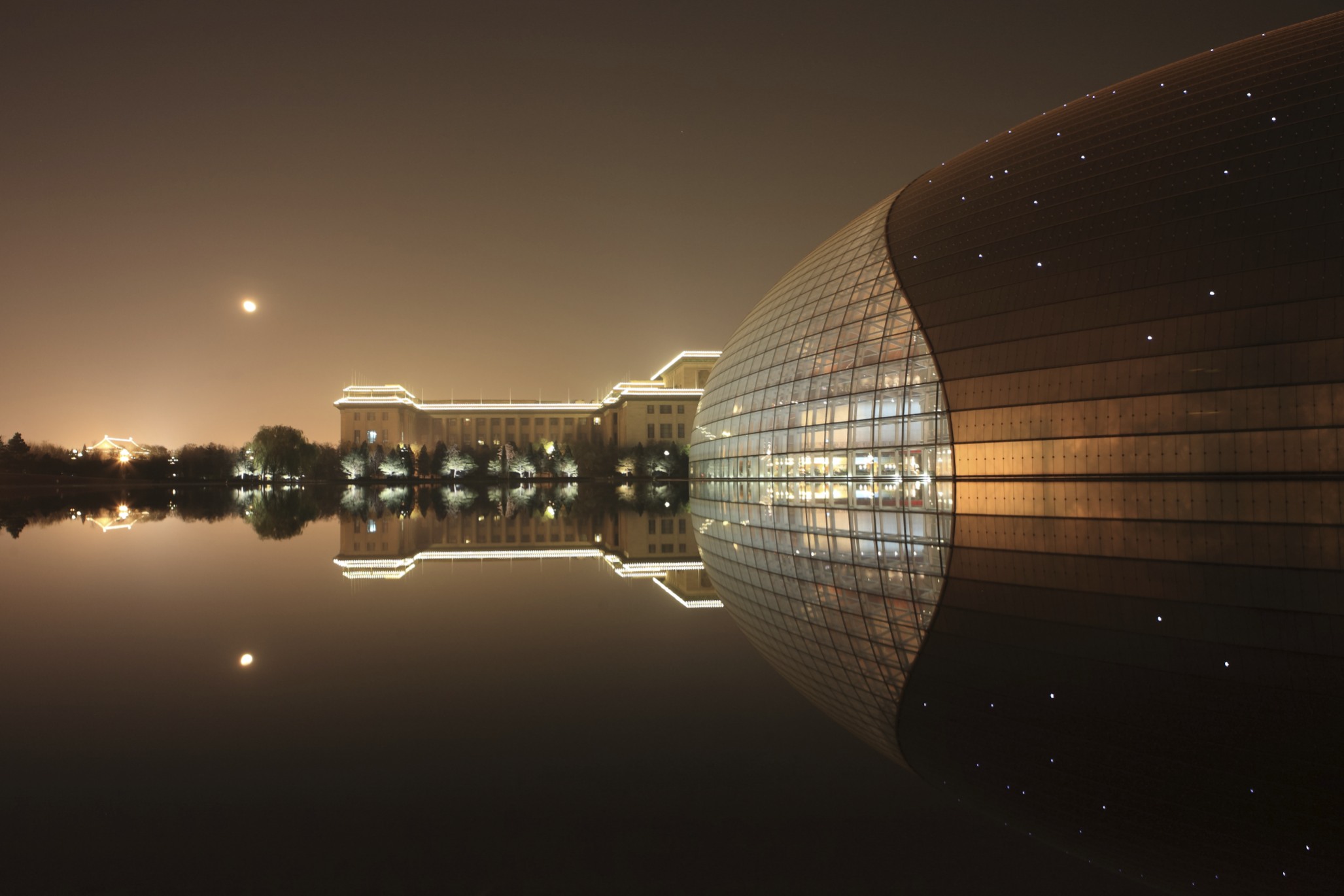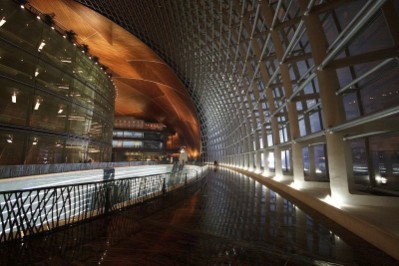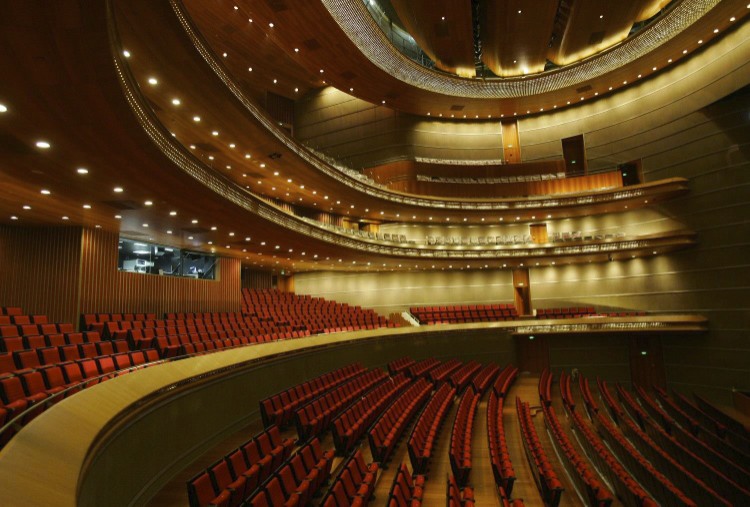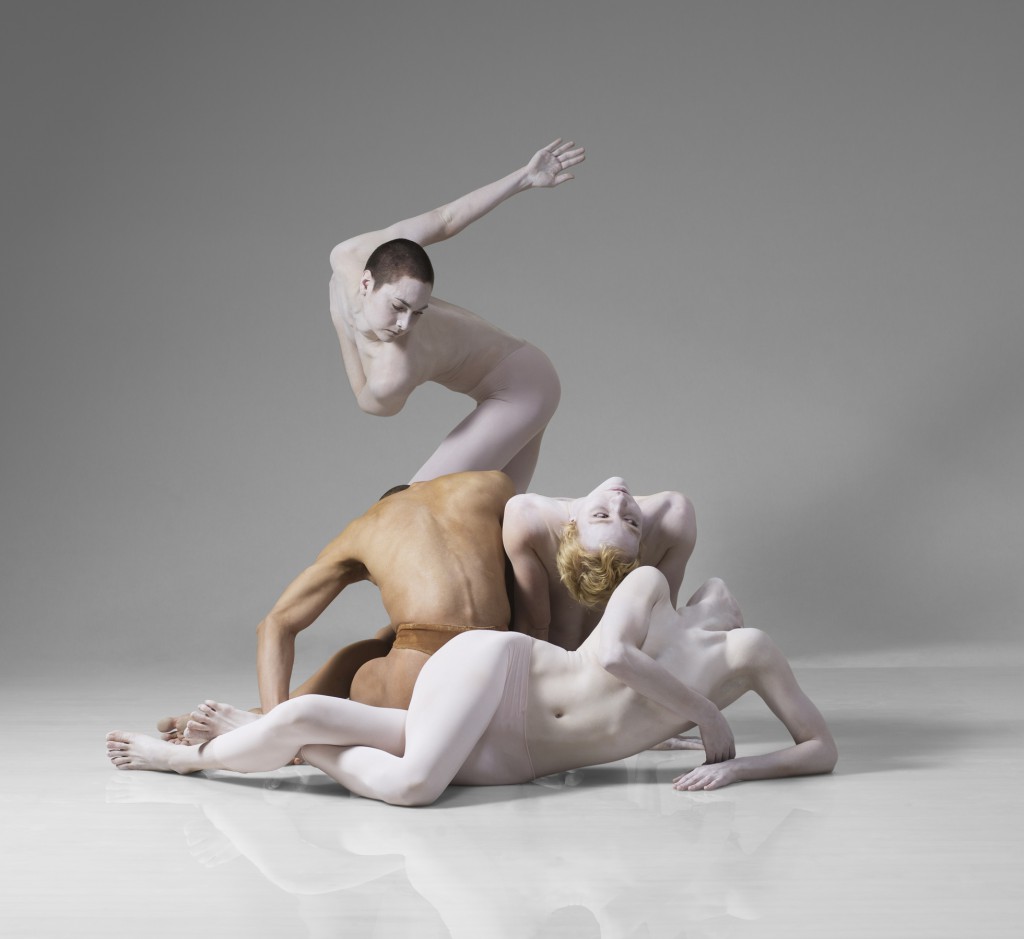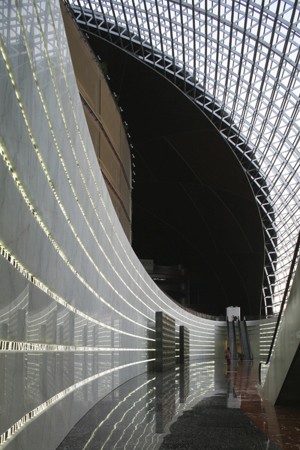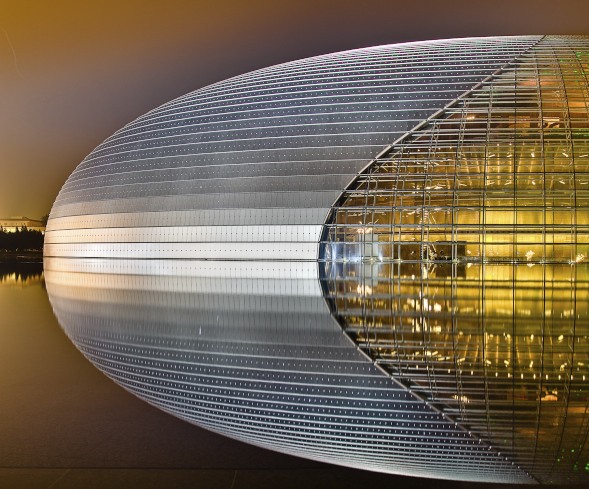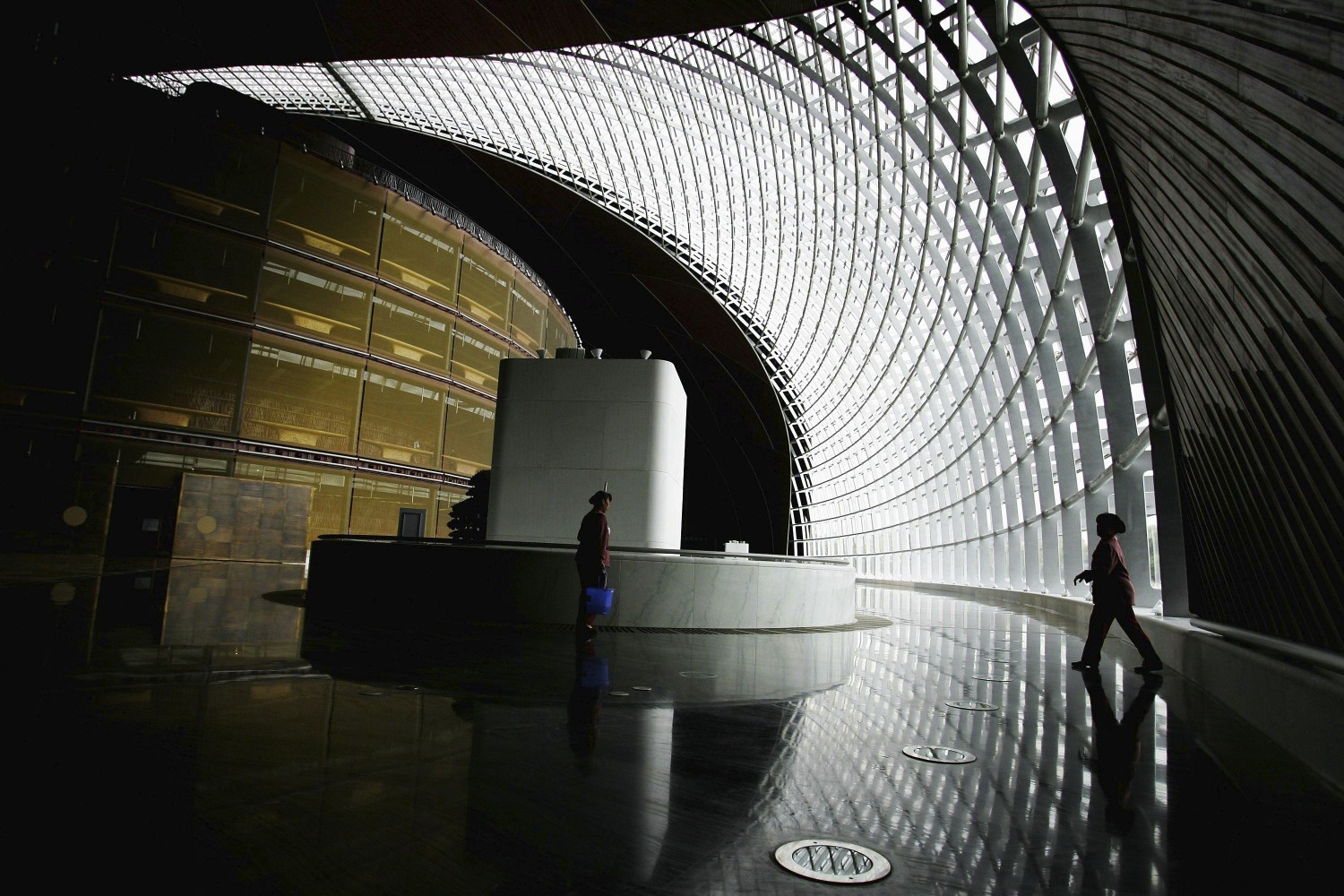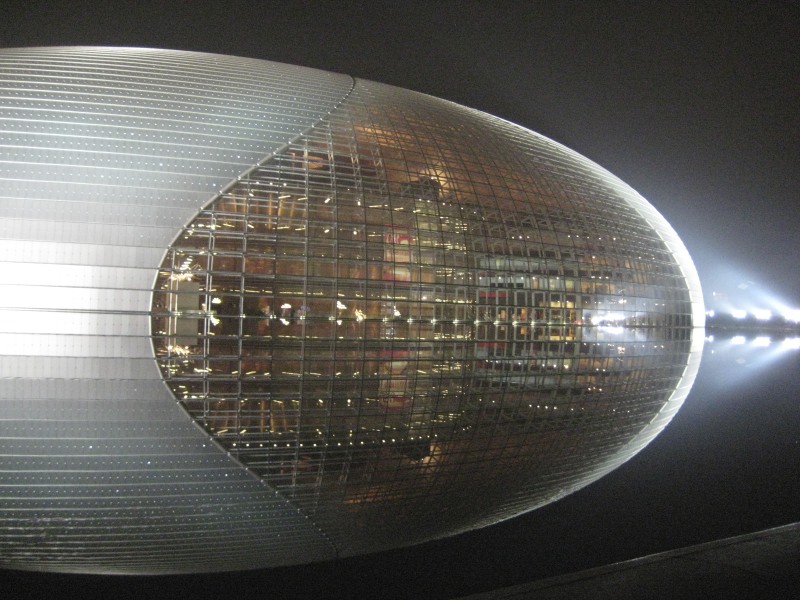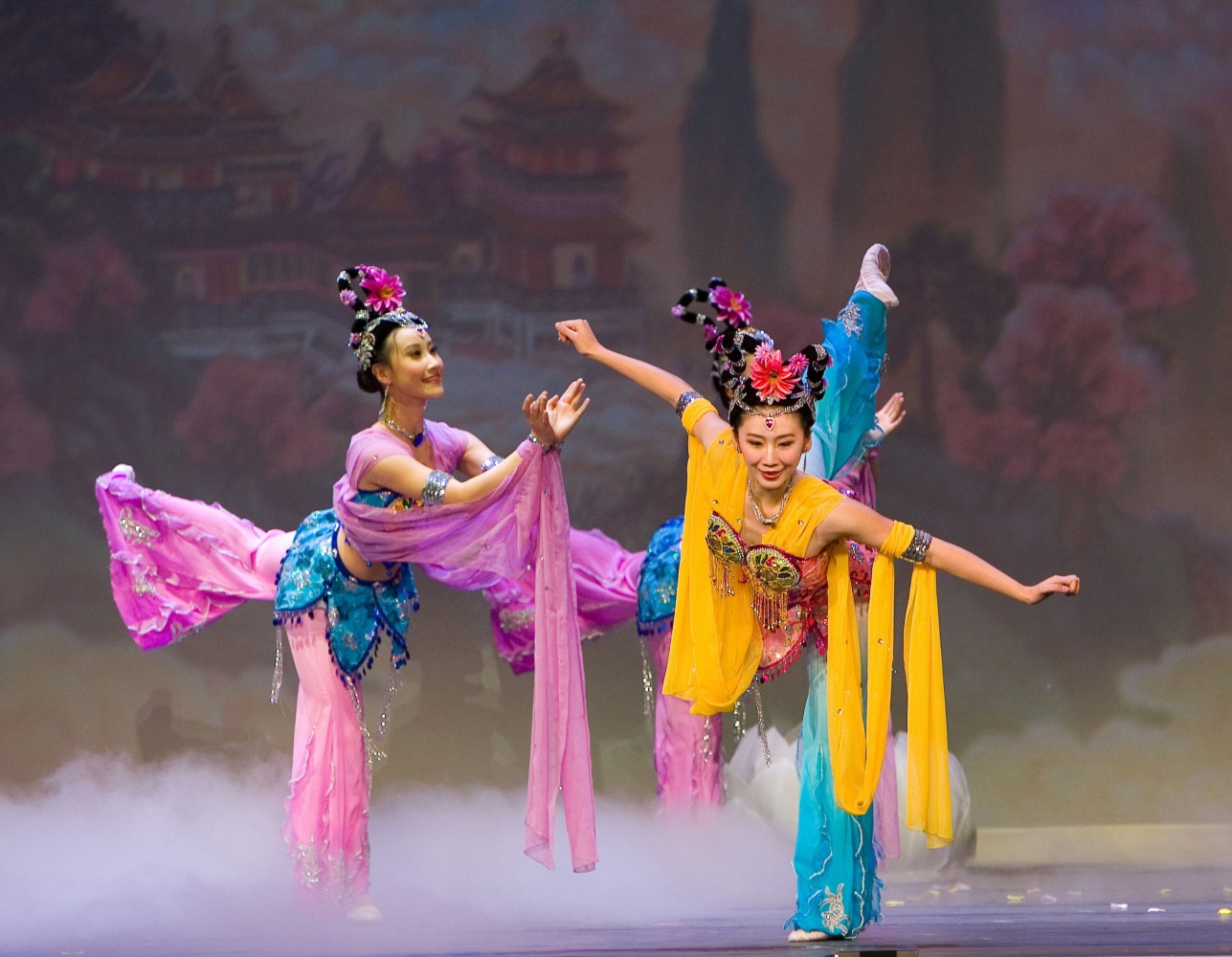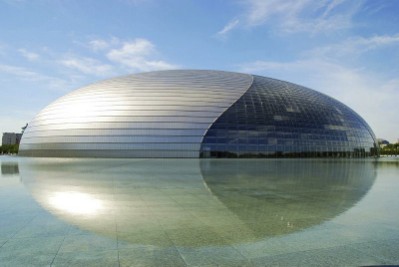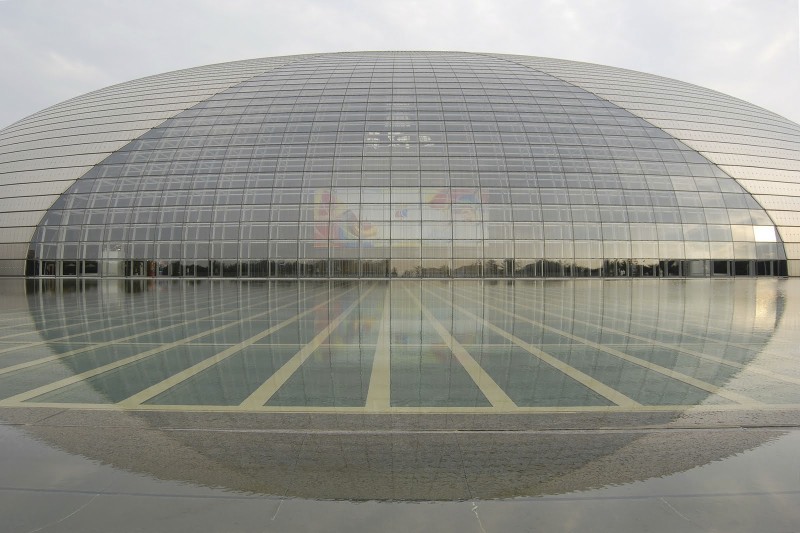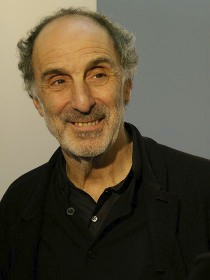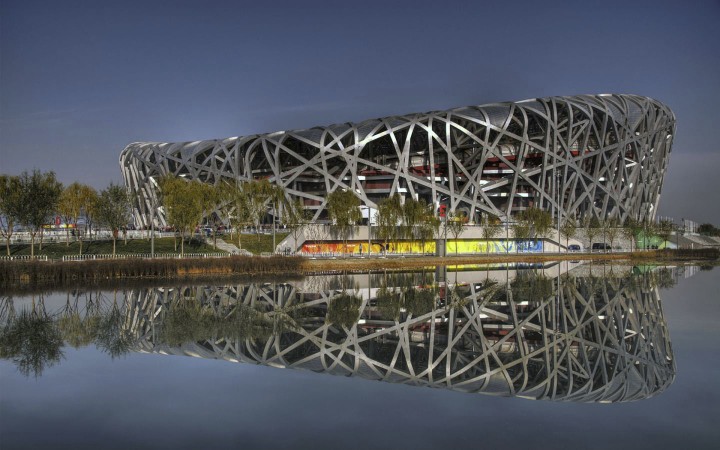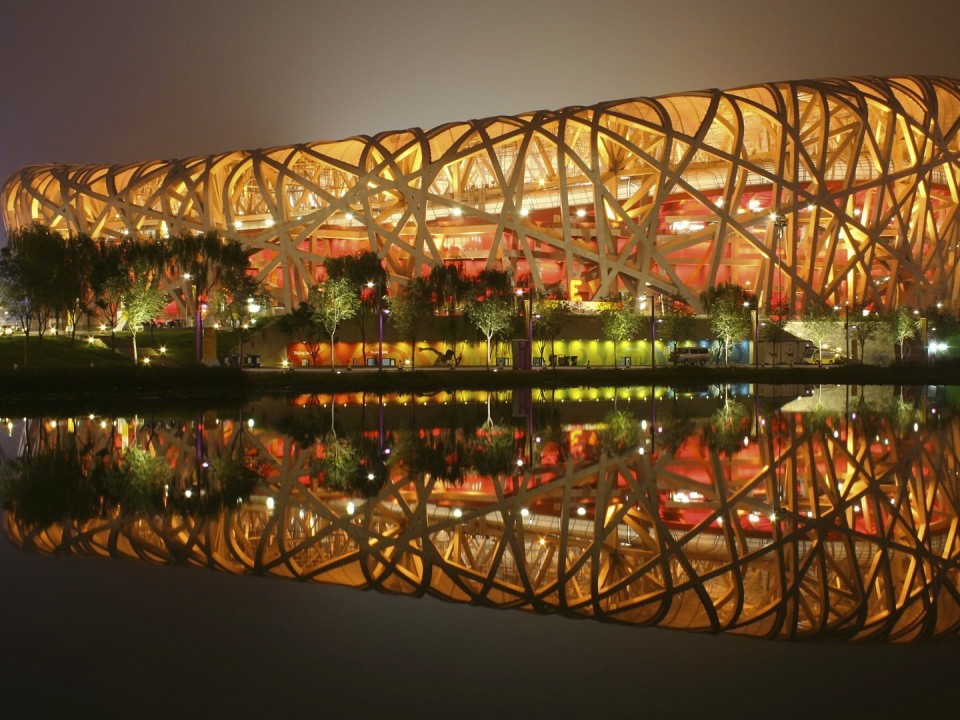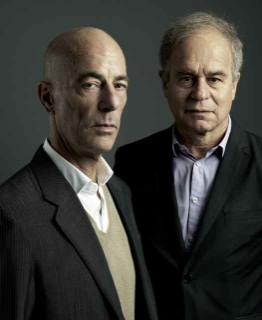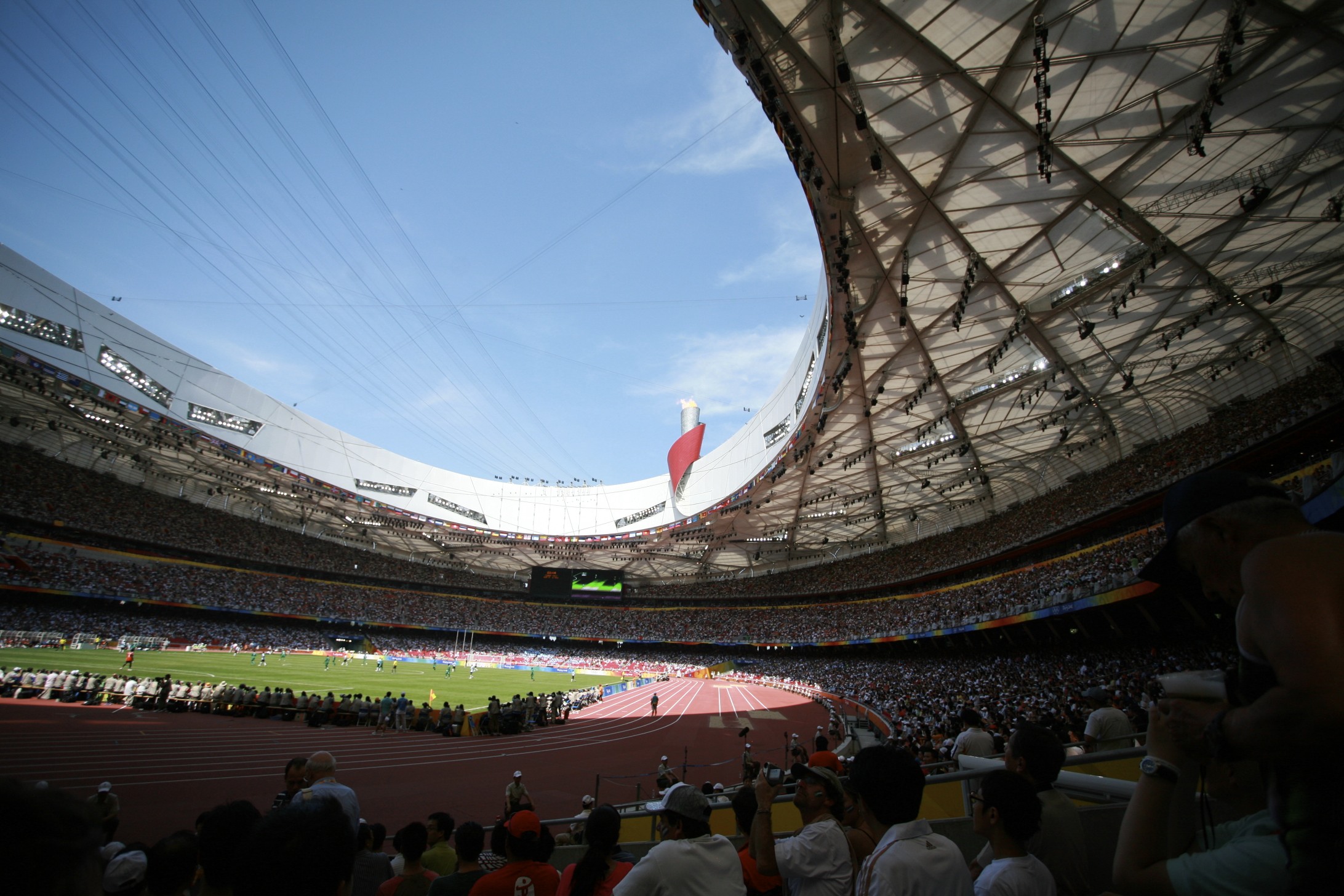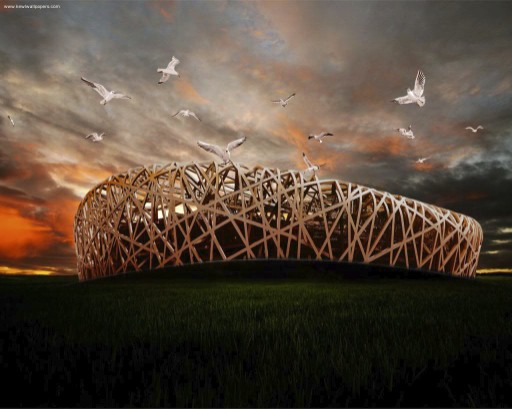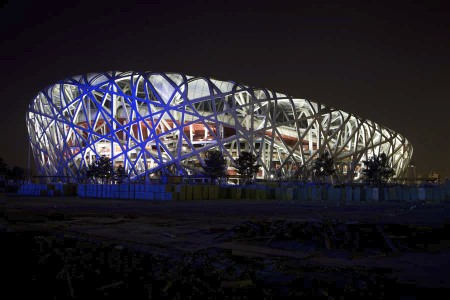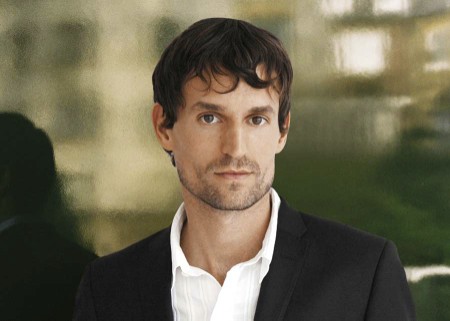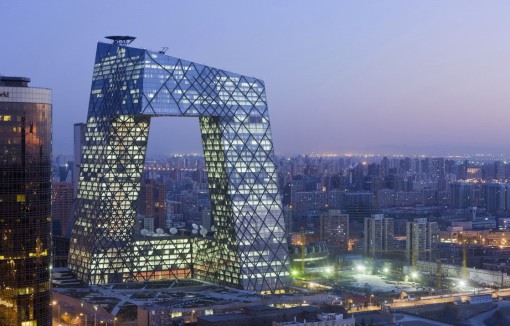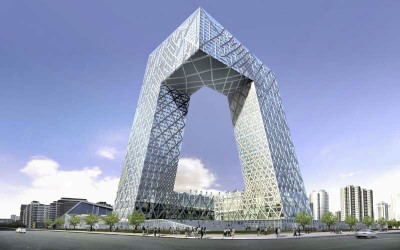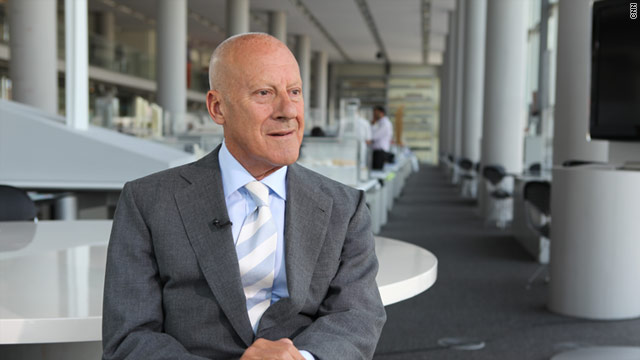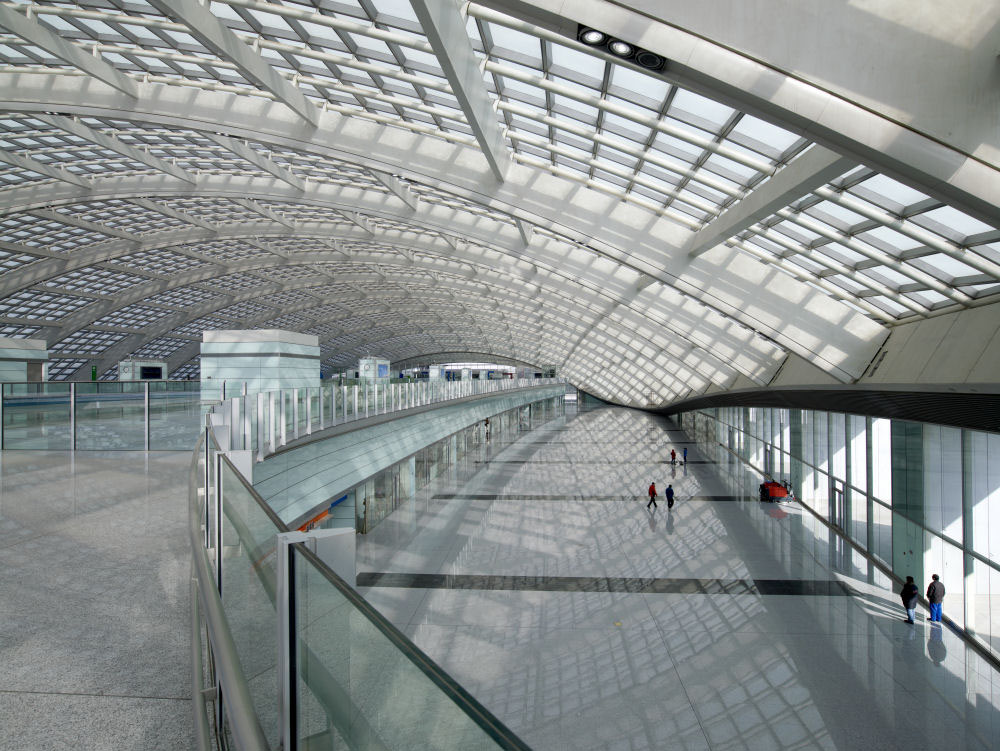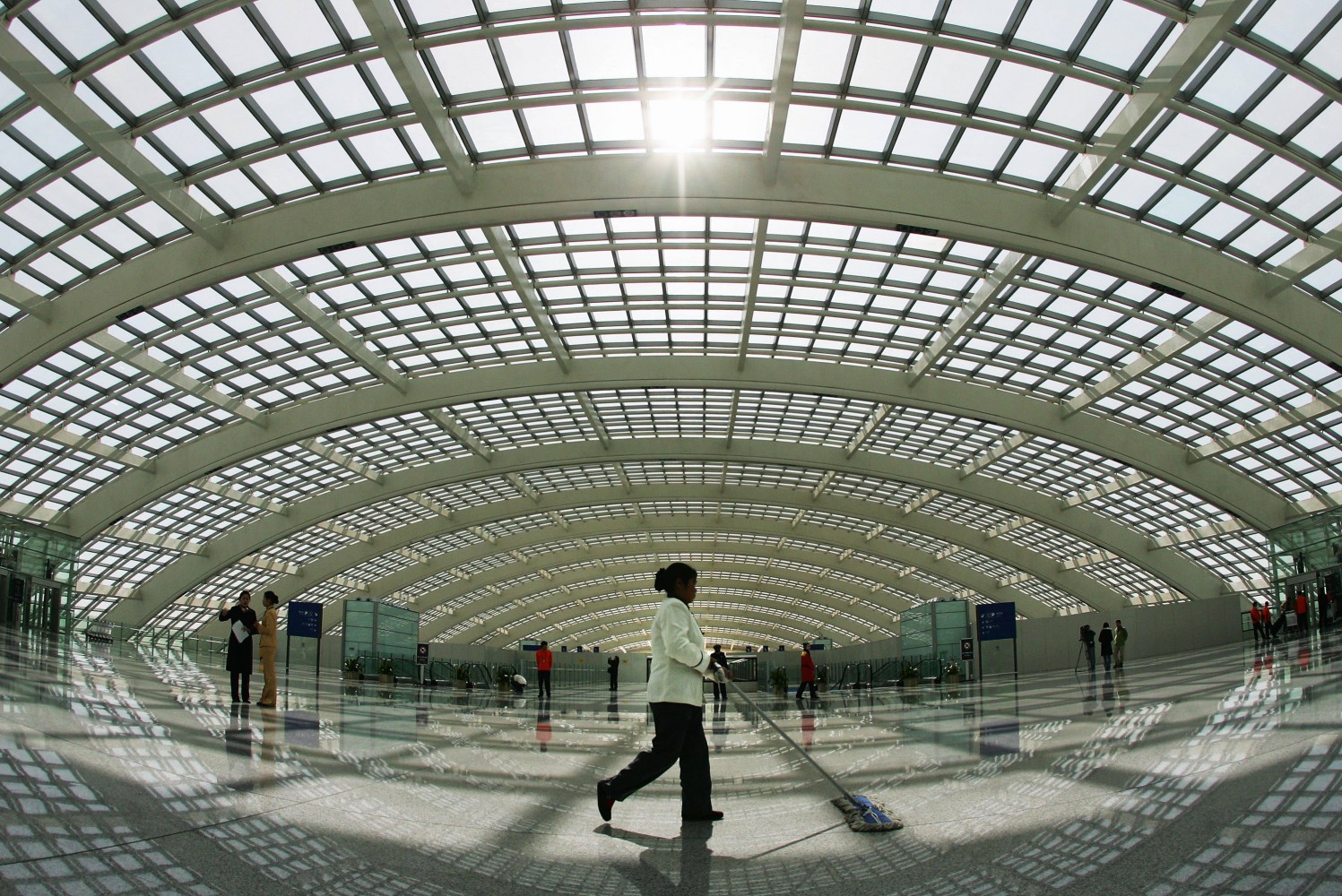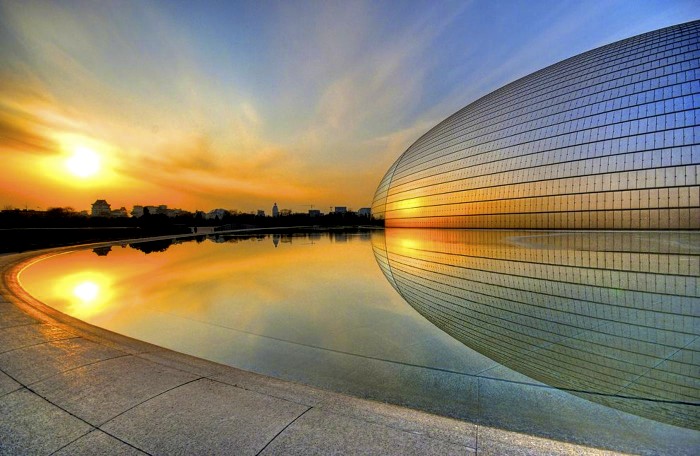The 2008 Summer Olympics changed the face of Beijing, and the changes keep on coming. Just about everywhere you look you’ll find signs of the feverish development boom that is continuing where the games left off. Whole city blocks were razed to make way for state-of-the-art Olympic venues, new hotels, and modern buildings. The subway system was expanded from two to eight lines—15 lines should be open by 2015—including a link from downtown Beijing to the airport.
I have created a description below among so many of my favorite architectural new projects designed by top international architects, all acting as Impressive worldly stages , to say the least.
NCPA/ National Center for Performing Arts
The completion of the National Center for performing Arts (NCPA) in Beijing marked not only a major architectural achievement , but was also a reflection of China ‘s enhanced strength in the cultural field. As the country ‘s top performing arts centers , the NCPA positions itself as ‘ the supreme palace of performing arts in China; the leader of arts educations and outreach: the grandest platform for Interntional arts exchange: and an important base for cultural creative industry.
With the Great Hall of The People lying to its east, the National Center for Performing Arts was designed by French architect Paul Andreu and completed in September 2007, the year prior to the beijing Olympic games. The massive structure also affectionately known as ” The Egg” covers and area of approximately 118.000 square meters and took more than five years to construct. The exterior of the NCPA integrates more than 18.000 titanium plates and over 1000 sheets of ultra-white glass.
Weighing 6.457 tons and with a 212,2 metro axis, the oval structure is currently the largest dome in the world. Surrounding this stunning architectural feat is an artificial lake which covers a surface area of 35.000 square meters. Architect Andreu has said that he envisioned the hall ” as a tribute to the traditional Chinese image of Heaven and Earth, round above square. ” The shell of the dome is in a shape resembling the Tao, and this symbolism is echoed further through its reflection in the lake.
The NCPA comprises three main performance venues, namely the Opera House, the Concert Hall, and the Theatre, in which symphonies, dance shows, ballets, dramas, opera and other forms of performance are staged regularly.All 1859 seats are positioned around the stage, allowing all members of the audience the best possible sight lines. Ceiling is designed not only for aesthetics but also for best possible acustics. The pipe organ in the concert Hall has 94 stops and 6.500 pipes, making it the largest in Asia.
BNS / Beijing National Stadium
Located in the Olympic Green, the stadium cost US$423 million. The design was awarded to a submission from the Swiss architecture firm Herzog & de Meuron in April 2003 after a bidding process that included 13 final submissions. The design, which originated from the study of Chinese ceramics, implemented steel beams in order to hide supports for the retractable roof; giving the stadium the appearance of a bird’s nest. Leading Chinese artist Ai Weiwei was the artistic consultant on the project
The retractable roof was later removed from the design after inspiring the stadium’s most recognizable aspect]Ground was broken on 24 December 2003 and the stadium officially opened on 28 June 2008.
Beijing National Stadium (BNS) was a joint venture among architects Jacques Herzog and Pierre de Meuron of Herzog & de Meuron, project architect Stefan Marbach, artist Ai Weiwei, and CADG which was led by chief architect Li Xinggang.
During their first meeting in 2003, atBasel, the group decided to do something unlike Herzog and de Meuron had traditionally designed. “China wanted to have something new for this very important stadium,” Li stated. In an effort to design a stadium that was “porous” while also being “a collective building, a public vessel”,the team studied Chinese ceramics. This line of thought brought the team to the “nest scheme”. The stadium consists of two independent structures, standing 50 feet apart: a red concrete seating bowl and the outer steel frame around it.
The stadium’s design originally called for a capacity of 100,000 people; however 9,000 were removed during a simplification of the design. The new total of 91,000 would be shaved further when 11,000 temporary seats were removed after the 2008 Olympics; bringing the stadium’s capacity to 80,000.The farthest seat is 460 feet (140 meters) from center field.Temperature and airflow of every surface were optimized to increase ventilation.
Beijing National Stadium hosted the Opening and Closing Ceremonies, athletic events, and football final of the 2008 Summer Olympics from 8 August to 24 August 2008 . The stadium also hosted the Opening and Closing ceremonies and athletic events of the 2008 Summer Paralympics from 6 September to 17 September 2008. Though designed for track & field events of the Olympics, the stadium will continue to host sporting events, such as football, afterwards.A shopping mall and a hotel, with rooms overlooking the field, are planned to help increase use after the Olympics.Li stated, “This will become the most important public space in Beijing.
CCTV / China Central Television Tower or Chinese Central Television Headquarters
Commonly abbreviated as CCTV, is the predominant state television broadcaster in mainland China. CCTV has a network of 22 channels broadcasting different programmes and is accessible to more than one billion viewers. Most of its programmes are a mixture of documentary, comedy, entertainment, and drama, the majority of which consists of Chinese soap operas and entertainment.
In 2007 China’s television audience rose to 1.2 billion. The 2008 Summer Olympics coverage on CCTV resulted in an aggregate 41% audience share across its network. As content becomes more diversified, there have been concerns about the audience share, as CCTV is losing out to cable, satellite and regional networks. In Guangzhou for example, CCTV programming only accounts for 45% of the weekly audience share, compared to 78% of Hong Kong’s TVB Jade and ATV and 80% for Guangzhou TV.Similarly, Shanghai’s local stations reported a 71% audience share over CCTV.However, the CCTV New Year’s Gala remains extremely popular; it acquires more than 90% audience share over the nation.
The CCTV Headquarters is a 234 m (768 ft), 44-storey skyscraper on East Third Ring Road, Guanghua Road in the Beijing Central Business District (CBD). The tower serves as headquarters for China Central Television (CCTV) that was formerly at the China Central Television Building located at 11 Fuxin Road some 15 km (9.3 mi) to the west. Groundbreaking took place on 1 June 2004 and the building’s facade was completed in January 2008. After the construction having been delayed as result of a fire which in February 2009 engulfed the adjacent Television Cultural Center, the Headquarters has been finally completed in May 2012.
Rem Koolhaas and Ole Scheeren of OMA were the architects in charge for the building, while Arup provided the complex engineering design. The main building is not a traditional tower, but a loop of six horizontal and vertical sections covering 473,000 m (1,552,000 ft) of floor space, creating an irregular grid on the building’s facade with an open center. The construction of the building is considered to be a structural challenge, especially because it is in a seismic zone. Because of its radical shape, it’s said that a taxi driver first came up with its nickname dà kùch? (???), roughly translated as, “big boxer shorts”.
PEK or ZBAA / Beijing Capital International Airport
(IATA: PEK, ICAO: ZBAA) is the main international airport serving Beijing, China. It is located 32 km (20 mi) northeast of Beijing’s city center in an enclave of Chaoyang District that is surrounded by suburban Shunyi District. The airport is owned and operated by the Beijing Capital International Airport Company Limited, a state-controlled company. The airport’s IATA Airport Code, PEK, is based on the city’s former romanized name, Peking.
Beijing Capital has rapidly ascended in rankings of the world’s busiest airports in the past decade. It had become the busiest airport in Asia in terms of passenger traffic and total traffic movements by 2009.
Beijing Capital International Airport is currently the second busiest airport in the world (as of 2011) in terms of passenger throughput behind Hartsfield-Jackson Atlanta International Airport. The airport registered 517,584 aircraft movements (take-offs and landings), which ranked 8th in the world in 2010, making Beijing Capital the only Asian airport in the Top 30
In terms of cargo traffic, Beijing airport has also witnessed rapid growth. By 2009, the airport had become the 14th busiest airport in the world by cargo traffic, registering 1,420,997 tonnes.
Beijing Capital International Airport is the main hub for Air China, the flag carrier of the People’s Republic of China, which flies to around 120 destinations (excluding cargo) from Beijing. Hainan andChina Southern Airlines also use the airport as their hub.
To accommodate the growing traffic volume, Beijing Capital added the enormous Terminal 3 in 2008 in time for the Olympic Games, the second largest airport terminal in the world after Dubai International Airport’s Terminal 3, and the fifth largest building in the world by area.
A 98.3 m (323 ft) monitoring tower stands at the southern end of T3, the highest building at the airport. The roof of T3 is red, the Chinese color for good luck. The terminal’s ceilings use white strips for decoration and to indicate directions. Under the white strips, the basic color of the ceiling is orange with light to dark tones indicating where a passenger is inside the building.
It is light orange in the center and deepens as it extends to the sides in T3E and is the other way around in T3C.The roof of T3 has dozens of windows to let in daylight. Light angles can be adjusted to ensure adequate interior lighting. However, interior lighting in itself is sufficient for comfortable reading.
Many traditional Chinese elements will be employed in the terminal’s interior decoration, including a “Menhai,” a big copper vat used to store water for fighting fires in the Forbidden City, and the carvings imitating the famous Nine-Dragon Wall.An indoor garden is constructed in the T3E waiting area, in the style of imperial gardens such as the Summer Palace.
In T3C, a tunnel landscape of an underground garden has been finished with plants on each side so that passengers can appreciate them inside the mini-train.The T3 food-service area is called a “global kitchen,” where 72 stores provide food ranging from formal dishes to fast food, from Chinese to western, from bakery goods to ice cream. Airport officials have promised that people who buy products at the airport will see the same prices as in Central Beijing.In addition to food and beverage businesses, there is a 12,600 m2 (136,000 sq ft) domestic retail area, a 10,600 m2 (114,000 sq ft) duty-free-store area and a nearly 7,000-square-meter convenience-service area, which includes banks, business centres, Internet services and more. At 45,200 m2 (487,000 sq ft), the commercial area is twice the size of Beijing’s Lufthansa Shopping Centres.
It provides 66 aerobridges or jetways, further complemented with remote parking bays which bring the total of gates to 120 for the terminal alone. Terminal 3 also comes with an additional runway. It increases BCIA’s total capacity by 43 million passengers per year to a total of approximately 78 million.
Joelle’s Tips:
The Source Wikepedia . Peninsula magazine Lucy Mac Nally
Images : Lois Greenfield, Guang Niu / Getty Images ,
